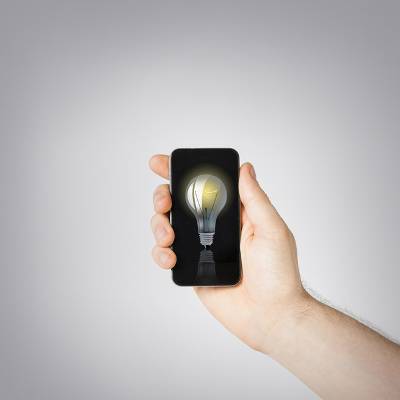Heart of Texas Network Consultants Blog
The Environmental Impact of Your Mobile Device
 What's the difference between an iPhone and a refrigerator? You can probably list off a dozen without even trying because they are both designed for two very different purposes, that is, until Apple makes an app to cool your food. Although, there is one thing they both have in common: Energy consumption.
What's the difference between an iPhone and a refrigerator? You can probably list off a dozen without even trying because they are both designed for two very different purposes, that is, until Apple makes an app to cool your food. Although, there is one thing they both have in common: Energy consumption.
In a recent report released by Digital Power Group, it was discovered that the average iPhone consumes more energy than a midsize refrigerator. This may come as a shock for all you Apple-loving greenies out there, feeling proud of yourself for driving a hybrid and only flushing your toilet once a day, but the numbers don't lie. According to the report, a midsize Energy Star qualified refrigerator uses 322 kW-h per year, while an iPhone uses 361 kW-h per year when factoring in wireless connections, data usage, and battery charging.
This energy consumption study takes into consideration more than just the amount of electricity used by the small iPhone battery. Other factors are also considered, like how much data the average smartphone user taps from the world's data centers (the cloud), which are expanding at a rapid rate, as well as the amount of energy it takes to run the ever-increasing number of wireless networks beaming data to your phone. This network is commonly referred to as the world's Information Communication Technology (ICT) ecosystem.
To be fair, this study was funded by the National Mining Association and the American Coalition for Clean Coal Electricity, and it reads like a pitch to show how society's increased energy consumption demands the continued use of coal. You can read the study and make up your own mind, but whatever the purpose behind the study is, the points it makes and the numbers it presents are still worth considering.
One trend that the study shines light on is how our civilization's growing appetite for an ever-increasing amount of data is eating up a growing percentage of total electricity produced by humanity. According to the study, the current slice consumed by mobile devices and the infrastructure of big data is 10%, which equates to 1,500 terawatt hours of energy use per year. To put this figure into perspective, one terawatt hour = one trillion watt hours, and one terawatt hour can power 90,000 homes for one year.
These figures only take into consideration energy consumption from the ICT network; it doesn't include the energy it takes to manufacture mobile devices. The iPhone 5 is estimated to take 57kg of carbon dioxide to manufacture, which is a 73% increase over the iPhone 4S. The point with all of these numbers and statistics is that mobile devices and big data may not be as green as you think. For example, with all the components of the ICT ecosystem in mind, the Digital Power Group's' study calculated that it now takes more energy to stream a high-definition movie on your mobile device, than it does to manufacture and ship a DVD.
The solution may not be to throw more technology as the problem. Perhaps the best thing we can do for the environment is to better manage the technology we have. This means turning off our smartphones when we are not using them, streaming a movie in standard definition, or browsing a website using HTML5. On the hardware side of the environmental equation, this means recycling and reusing our unwanted workstations and mobile devices, and upgrading to technology that we need, instead of going with feature-rich technology that we want.
For more tips on how you can go green by changing your technology habits, or if you want to learn about solutions you can implement that will save your business energy, paper, and consolidate older pieces of equipment like your power-hungry servers, call Heart of Texas Network Consultants at (254) 848-7100.



Comments